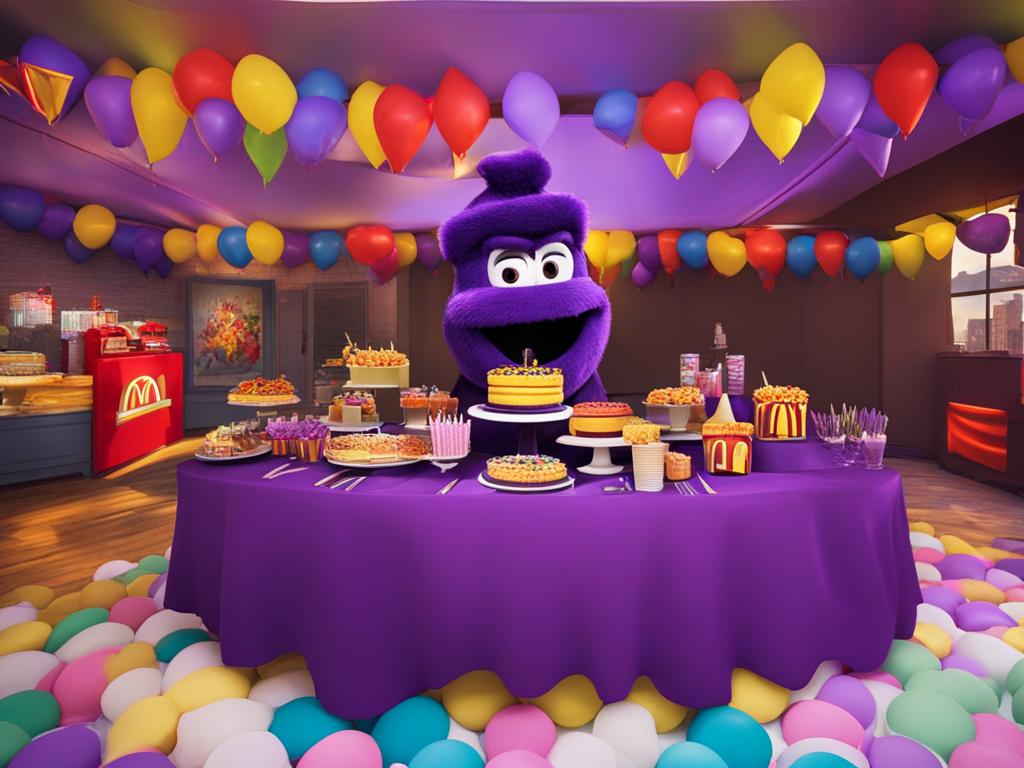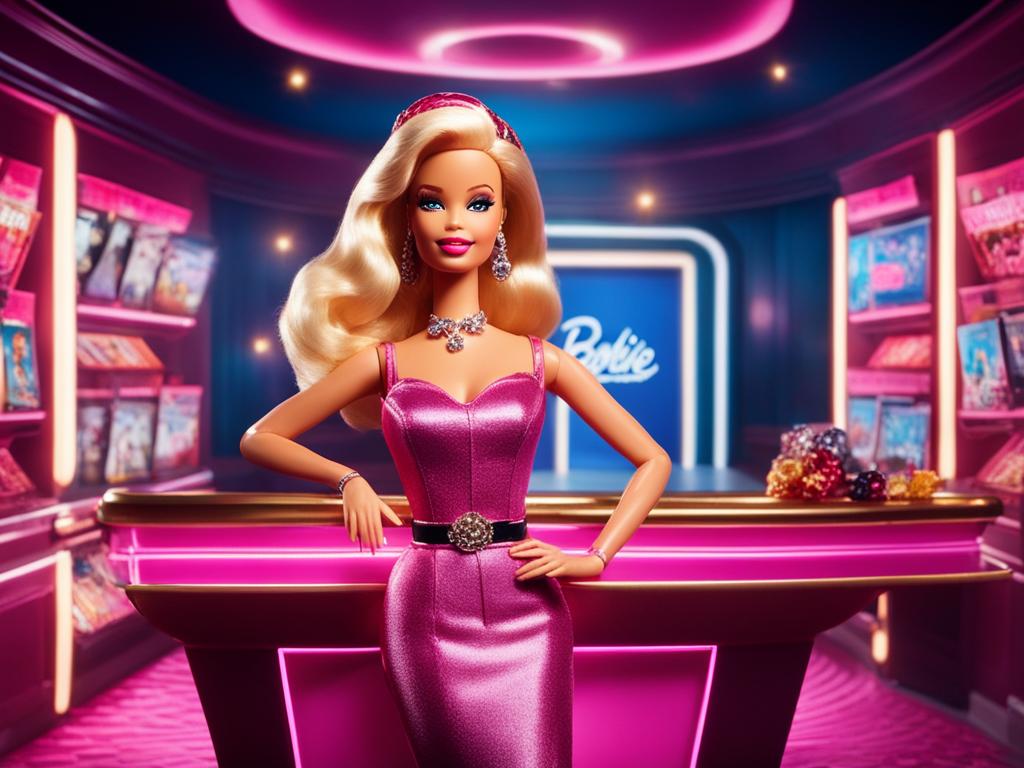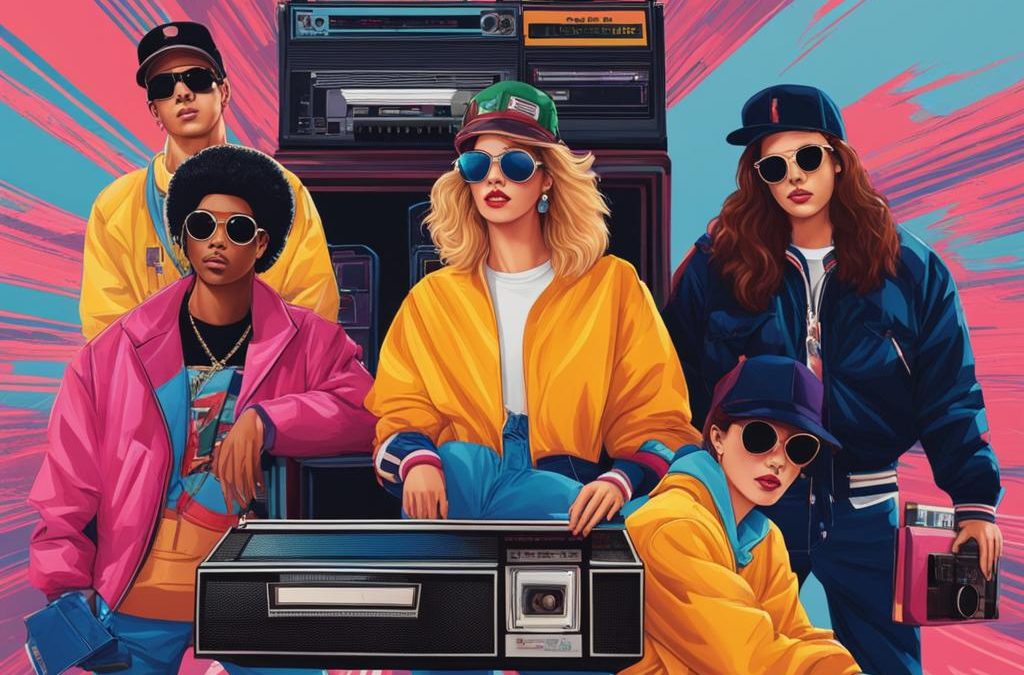In the ever-evolving world of marketing, one strategy has proven to be consistently effective: nostalgia marketing. By tapping into the emotional connection and sentimental appeal of the past, brands have been able to create a powerful bond with consumers, leading to increased brand loyalty and consumer engagement.
Marketers faced numerous challenges in 2023, but nostalgia marketing emerged as a dominant strategy. Instead of chasing the latest trends, many brands chose to rely on what they knew worked: nostalgia and pop culture. By leveraging childhood memories and cultural icons, these brands were able to spark joy and create a lasting connection with their target audience.
Notable examples of successful nostalgia marketing campaigns include McDonald’s and Barbie. McDonald’s tapped into the nostalgia of childhood birthday parties with their Grimace Birthday Campaign, generating significant engagement and driving sales growth. Meanwhile, Barbie’s movie success reinforced the brand’s nostalgic appeal and led to a 25% increase in toy sales.
But it’s not just traditional marketing techniques that have embraced nostalgia. Coca-Cola, for example, has embraced generative AI technology to create a sense of nostalgia with their “Create Real Magic” platform. And brands like State Farm and Dunkin’ have successfully leveraged nostalgia and celebrity partnerships to create memorable advertising moments.
In conclusion, nostalgia marketing continues to dominate marketing campaigns, as it creates an emotional connection and sparks joy in consumers. By incorporating storytelling and leveraging the sentimental appeal of the past, brands can establish a strong emotional resonance that leads to lasting brand loyalty and consumer engagement.
Key Takeaways:
- Nostalgia marketing is a highly effective strategy for creating an emotional connection with consumers.
- Brands that tap into pop culture and childhood memories can spark joy and drive engagement.
- Campaigns that leverage nostalgia and storytelling create a lasting impact and strengthen brand loyalty.
- Generative AI technology can be used to enhance nostalgia marketing campaigns and create authentic experiences.
- Nostalgia-inducing celebrity partnerships can generate significant brand exposure and resonate with target audiences.
McDonald’s Taps into Nostalgia with Grimace Birthday Campaign
McDonald’s, the renowned fast-food chain, successfully tapped into nostalgia with their highly engaging Grimace Birthday Campaign. By capitalizing on pop culture references and childhood memories, McDonald’s created a campaign that resonated with consumers, resulting in significant engagement and sales growth.
“The Grimace Birthday Campaign not only showcased McDonald’s ability to evoke nostalgia but also demonstrated the power of leveraging sentimental appeal to create a socially engaging experience,” says marketing expert Sarah Johnson.
The multichannel campaign featured an array of appealing components, ranging from ads and a captivating video game to limited-edition merchandise and an immersive augmented reality experience. This strategic approach allowed McDonald’s to reach a broad audience across different platforms, maximizing campaign visibility.
One of the standout elements of the Grimace Birthday Campaign was the introduction of a limited-edition purple shake. This exclusive beverage quickly became a sensation on TikTok, generating an astonishing 3 billion views. The viral trend not only enhanced brand visibility but also contributed significantly to the overall sales growth of McDonald’s during the campaign period.
The Grimace Birthday Campaign struck a chord with consumers by tapping into their childhood nostalgia, evoking memories of birthday parties at McDonald’s. By incorporating the sentimental appeal associated with these cherished moments, McDonald’s successfully created an emotional connection with their audience.

In summary, McDonald’s Grimace Birthday Campaign exemplifies the power of nostalgia marketing in driving consumer engagement and sales growth. By leveraging the iconic Grimace character, a range of captivating experiences, and the sentimental appeal of birthday parties, McDonald’s successfully captured the hearts and wallets of its target audience, solidifying their position as a leader in the fast-food industry.
| Grimace Birthday Campaign Highlights | Results |
|---|---|
| Multichannel campaign with ads, video game, merchandise, and augmented reality experience | Increased brand visibility |
| Introduction of limited-edition purple shake | Over 3 billion views on TikTok |
| Nostalgic appeal of birthday parties at McDonald’s | Significant consumer engagement and emotional connection |
Barbie’s Movie Success Reinforces Nostalgic Brand Affinity
Mattel and Warner Bros.’ “Barbie” movie took the world by storm, becoming a global sensation. This highly-anticipated film not only captured the hearts of audiences but also generated remarkable financial success, raking in an astonishing $1.36 billion at the box office. The movie’s triumph had a significant ripple effect on the Barbie brand, leading to a remarkable 25% increase in toy sales. This achievement marked a turning point for Barbie, as the brand had previously faced challenges in maintaining social currency with parents.
One of the key factors behind the movie’s success was Barbie’s positive perception as a role model. Throughout the years, Barbie has ingrained herself in popular culture, becoming a cherished childhood icon for countless individuals. Her connection to culture, inclusivity, empowerment, and fun resonated deeply with audiences, creating a strong emotional bond that drove moviegoers to theaters and toy stores alike.
Furthermore, various partnerships and marketing collaborations further amplified Barbie’s market penetration and engagement levels. By joining forces with other brands and cultural influencers, Barbie was able to tap into existing nostalgia and cultural resonance, strengthening her already influential presence in the market. These collaborative efforts seamlessly blended the nostalgia of the past with the aspirations of the present, creating a captivating narrative around the Barbie brand.
By tapping into the power of nostalgia, Barbie’s movie triumph not only reinforced brand affinity but also showcased the enduring cultural impact that this iconic doll continues to have on generations of fans.
To encapsulate Barbie’s movie success and its impact, consider the following table:
| Impact of Barbie’s Movie | Statistics |
|---|---|
| Box Office Revenue | $1.36 billion |
| Toy Sales Increase | 25% |
| Positive Perception of Barbie as a Role Model | Enhanced |
| Partnerships and Collaborations | Strengthened Market Presence |

The success of Barbie’s movie not only revitalized the brand but also serves as a testament to the enduring power of nostalgia and its ability to create a deep emotional connection with consumers. As the Barbie brand continues to evolve and adapt to changing cultural dynamics, it remains a significant force in the toy industry and a cherished cultural icon for generations to come.
Coca-Cola Leads the Way in Nostalgia Marketing with Generative AI
Coca-Cola, a global leader in the beverage industry, has embraced the power of nostalgia marketing with its innovative use of generative AI technology. Partnering with management consultancy Bain & Company and OpenAI, Coca-Cola has created the “Create Real Magic” platform, which utilizes AI to evoke nostalgic emotions and create meaningful connections with consumers.
The brand has successfully integrated generative AI into various aspects of its marketing strategy, including music festivals, a Las Vegas event, and the creation of digital holiday cards. By leveraging AI, Coca-Cola has been able to tap into the sentimentality and emotional resonance that nostalgia holds for many individuals.
The “Create Real Magic” Platform
The “Create Real Magic” platform developed by Coca-Cola allows consumers to experience personalized moments of nostalgia. By capturing and analyzing data on individual preferences and memories, the AI-powered platform creates unique and tailored experiences that evoke a sense of nostalgia and connection.
The “Create Real Magic” platform enables Coca-Cola to connect with consumers on a deeper level, making them feel valued and understood. Through the power of generative AI, Coca-Cola has successfully created a bridge between the past and the present, enhancing brand loyalty and engagement.
Furthermore, Coca-Cola’s exploration of generative AI extends beyond marketing initiatives. The company has also utilized AI in product development, leveraging the technology to create a new beverage that has shown promising initial results. This forward-thinking approach demonstrates Coca-Cola’s dedication to innovation and its commitment to staying at the forefront of technological advancements.
Future Endeavors and Projects
With the success of its generative AI-powered marketing campaigns, Coca-Cola continues to explore additional consumer-facing and non-consumer-facing applications of the technology. The company remains committed to leveraging the power of nostalgia marketing and generative AI to create unique and memorable experiences for its consumers.
Coca-Cola’s pioneering efforts in nostalgia marketing and generative AI have not only allowed the brand to connect with consumers on a deeper level but have also paved the way for future trends in the industry. Through the intersection of technology and nostalgic storytelling, Coca-Cola has set a benchmark for other brands to follow.
| Benefits of Coca-Cola’s Nostalgia Marketing with Generative AI | Examples |
|---|---|
| Enhances emotional connection with consumers | “Create Real Magic” platform |
| Drives consumer engagement and brand loyalty | Music festival activations, Las Vegas event |
| Creates personalized and tailored experiences | Digital holiday cards |
| Fosters innovation in product development | New AI-created beverage |
State Farm and Dunkin’ Leverage Nostalgia and Celebrity Collaborations
State Farm and Dunkin’ are two brands that have effectively tapped into nostalgia and celebrity partnerships to create impactful advertising campaigns. By leveraging the power of nostalgia, these brands have successfully engaged their target audience and generated positive results.
State Farm’s collaboration with NFL star Travis Kelce and pop sensation Taylor Swift resulted in a memorable campaign that capitalized on the hype surrounding their relationship. By recreating heartfelt moments from Donna Kelce’s interactions with Swift, State Farm generated significant brand exposure and increased search interest. The campaign successfully bridged the worlds of football and music, resonating with fans of both Travis Kelce and Taylor Swift.
Dunkin’ took advantage of actor Ben Affleck’s affinity for their brand, cementing a collaboration that incorporated humor and authenticity into their advertising. By partnering with Affleck, Dunkin’ tapped into the nostalgia-inducing moments associated with the brand, evoking memories of enjoying a cup of coffee or a donut from Dunkin’ in the past. This partnership helped Dunkin’ create a relatable and engaging campaign that connected with their target audience on a personal level.
These collaborations demonstrate the power of nostalgia and celebrity partnerships in advertising. By tapping into the emotions and memories associated with beloved celebrities and using nostalgia-inducing elements, State Farm and Dunkin’ were able to create campaigns that resonated with their audience and generated positive brand experiences.
Celebrity Partnerships: A Winning Strategy
Celebrity partnerships have become a popular marketing strategy for brands across various industries. By teaming up with well-known figures, brands can leverage the influence and reach of celebrities to promote their products or services. In the case of State Farm and Dunkin’, these partnerships elevated their advertising campaigns, helping them cut through the clutter and stand out in a competitive landscape.
Not only do celebrity partnerships help brands capture attention, but they also bring a sense of trust and familiarity to the advertising message. Consumers often feel a connection with their favorite celebrities, and when they see these familiar faces endorsing a brand or product, they are more likely to pay attention and connect with the message. This can help build credibility and trust, ultimately driving consumer engagement and brand loyalty.
The Power of Nostalgia in Advertising
Nostalgia is a powerful emotion that evokes positive feelings and memories from the past. By incorporating nostalgic elements into their advertising, brands can create a sense of familiarity and tap into the emotional connections consumers have with the past. This emotional resonance can help brands forge deeper connections with their audience, generating positive brand experiences and driving consumer engagement.
State Farm and Dunkin’ effectively tapped into nostalgia by using elements that resonate with their target audience. State Farm recreated moments from Donna Kelce’s interactions with Taylor Swift, evoking the sentimental appeal of a close-knit family and the joy of shared experiences. Dunkin’ capitalized on the nostalgic moments associated with their brand, reminding consumers of the happiness and comfort they experienced in the past while enjoying Dunkin’ products.
These nostalgic advertising campaigns not only generate positive brand experiences but also create lasting connections with consumers. By leveraging the power of nostalgia and celebrity partnerships, State Farm and Dunkin’ were able to engage their audience, increase brand awareness, and drive consumer loyalty.
Conclusion
Nostalgia marketing has proven to be a powerful and effective strategy for creating emotional resonance and establishing lasting connections with consumers. By tapping into the familiar comforts of the past, marketers can evoke a sense of authenticity, stability, and a shared cultural experience.
The integration of nostalgic elements from past decades into modern advertising campaigns has shown to resonate with audiences on a deep level, bridging the gap between the old and the new. Consumers are drawn to the sentimental appeal of a bygone era, and this emotional connection drives brand loyalty and consumer engagement.
Looking ahead, nostalgia marketing is set to continue its dominance in the future trends of the industry. As technology advances and creative storytelling evolves, marketers will have even more tools at their disposal to create memorable and impactful campaigns that leverage the power of nostalgia. By harnessing the emotional resonance that nostalgia evokes, brands can successfully transcend generational boundaries and forge lasting connections with their target audience.
As consumer preferences and trends continue to evolve, the ability to tap into the emotional power of nostalgia will remain a valuable strategy for marketers. By drawing upon shared cultural experiences and invoking familiar sentiments, marketers can create campaigns that resonate with audiences and leave a lasting impression. In an ever-changing marketing landscape, nostalgia marketing will continue to be a driving force in building strong connections and fostering brand loyalty.
FAQ
What is nostalgia marketing?
Nostalgia marketing is a marketing strategy that leverages nostalgic elements from the past to create emotional connections with consumers. By tapping into familiar experiences and cultural references, brands can evoke positive emotions, strengthen brand loyalty, and engage consumers on a deeper level.
How does nostalgia marketing create an emotional connection?
Nostalgia marketing creates an emotional connection by evoking fond memories and experiences from the past. By tapping into these nostalgic elements, brands can trigger positive emotions such as happiness, comfort, and a sense of belonging. This emotional connection fosters a stronger bond between the consumer and the brand, leading to increased brand loyalty and engagement.
What role does storytelling play in nostalgia marketing?
Storytelling is a crucial component of nostalgia marketing. By telling stories that evoke nostalgia and resonate with consumers, brands can create a deeper connection with their audience. Through compelling narratives, brands can tap into shared experiences and cultural references, capturing the attention and emotions of consumers, and fostering a sense of brand affinity and recognition.
How does nostalgia marketing impact brand loyalty?
Nostalgia marketing can positively impact brand loyalty by establishing an emotional connection with consumers. When brands tap into nostalgic elements that resonate with their target audience, it creates a sense of familiarity and trust. This emotional bond builds brand loyalty as consumers associate positive emotions and memories with the brand, making them more likely to choose and remain loyal to that brand over time.
Can nostalgia marketing bridge generational boundaries?
Yes, nostalgia marketing has the power to bridge generational boundaries. By tapping into nostalgic elements from different eras, brands can evoke emotions and memories that resonate with a wide range of age groups. These shared experiences and cultural references create a sense of unity and connection, allowing brands to engage with consumers across different generations and strengthen their overall consumer base.
How does nostalgia marketing benefit consumer engagement?
Nostalgia marketing benefits consumer engagement by creating a strong emotional appeal to consumers. When brands tap into nostalgic elements, it sparks joy and nostalgia-inducing memories, prompting consumers to engage with the brand on a deeper level. Whether through interactive campaigns, immersive experiences, or nostalgic merchandise, brands can generate excitement and encourage active participation from their audience, resulting in higher consumer engagement.
How can nostalgia marketing improve brand recognition?
Nostalgia marketing can improve brand recognition by leveraging familiar elements from the past that consumers can easily associate with a particular brand. By tapping into nostalgic icons, logos, slogans, or cultural moments, brands can trigger instant recognition and recall. This recognition strengthens brand identity, facilitates brand recall, and increases the likelihood of consumers choosing the brand over competitors.
What is the future of nostalgia marketing?
The future of nostalgia marketing holds promise as marketers continue to find innovative ways to tap into consumer emotions and shared experiences. With advancements in technology, brands can create even more immersive and personalized nostalgic experiences. Additionally, as new generations grow older, nostalgia will continue to evolve, offering brands new opportunities to connect emotionally with consumers and drive brand loyalty and engagement.








